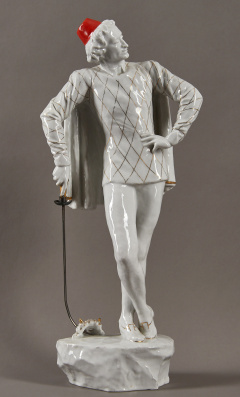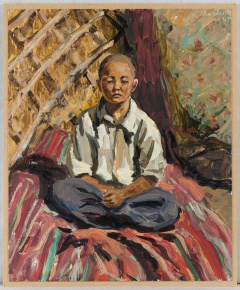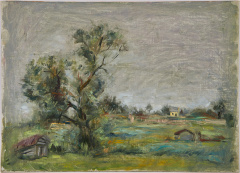Joseph Turner, and the old masters in the Tate Gallery
Recently, representatives of the Tate galleries reported that the fall of next year in the halls of Tate Britain will open exhibition «Turner and the Old Masters», devoted to works of British painter William Turner, Joseph Mellorda, which is considered the predecessor of the French Impressionists. This artist has gone down in history primarily as one of the pioneers in the field of landscape XIX century. However, the main objective of the exhibition, which can be seen in the Tate - to display the less-known side of Turner's art - his desire to emulate and surpass the great masters of the past - of his predecessors.
At the exhibition «Turner and the Old Masters» will be presented to some 100 paintings gathered from collections around the world and of great historical significance. For the first time in the Tate Britain Turner's canvases will accommodate a number of masterpieces masters XVI - XVII centuries - Rubens, Rembrandt, Claude Lorrain and Nicolas Poussin, whom he admired, sought to emulate and even surpass. The exhibition will present clearly the continuity of Turner's paintings and his predecessors. One of the curators of the exhibition Uorrel Ian (Ian Warrell) said: «the artist himself has always meant this link, but until now, to see work next to each other, no one could».
Turner was born in 1775 in London, the family barber. Barely 22 years after he first proposed to put their works at the Royal Academy of Arts. Then he presented to the court spectators picture «Moonlight. Etude in Millbanke », which showed the London landscape - the coast and the Thames river, the moon illuminated. This is a surprising similarity to the canvas by Rembrandt «Rest on the Flight into Egypt». Comparison of the two canvases shown that Turner was able to come close to Rembrandt, which so far has not been equal in skill images of light and reflection.
Turner always felt quite confident and have confidence in their abilities. He even said: «I do not understand how Rembrandt achieved this effect, but I can do the same and even better». And he actually tried to prove that he is no worse, and even better than his predecessors, whose works he so admired. Another example can be seen when comparing the rural landscape «Crossing the creek», written by Turner in 1815, and canvases «Saving Moses» (1637) painted by Claude Lorrain. According to the director of Tate Britain Stephen Dyushara (Stephen Deuchar), these pictures are similar and the level of the horizon line, and trees, and figures for first and middle term. Turner's paintings are present «reprocessing works by Claude Lorrain to the British public the XIX century». French landscape paintings really inspired Turner. That is why he commanded two of its work the National Gallery with a prerequisite that they put next to their favorite canvases of Claude Lorrain. William Turner died in 1851 and was buried in St. Paul's Cathedral in London.
material produced Catherine Onuchin
Sources: , , artinvestment.ru
Permanent link to:
https://artinvestment.ru/en/news/exhibitions/20080909_joseph_turner_in_tate_gallery.html
https://artinvestment.ru/news/exhibitions/20080909_joseph_turner_in_tate_gallery.html
© artinvestment.ru, 2024
Attention! All materials of the site and database of auction results ARTinvestment.RU, including illustrated reference information about the works sold at auctions, are intended for use exclusively for informational, scientific, educational and cultural purposes in accordance with Art. 1274 of the Civil Code. Use for commercial purposes or in violation of the rules established by the Civil Code of the Russian Federation is not allowed. ARTinvestment.RU is not responsible for the content of materials submitted by third parties. In case of violation of the rights of third parties, the site administration reserves the right to remove them from the site and from the database on the basis of an application from an authorized body.







